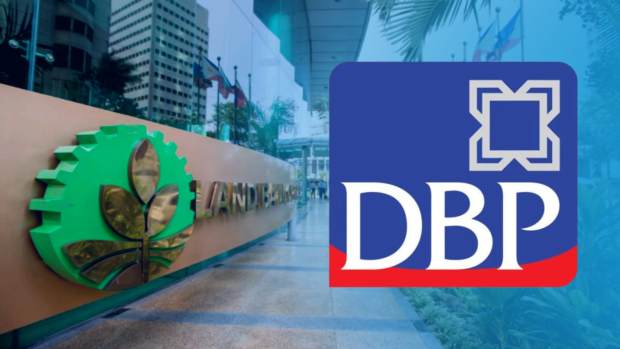Marcos OKs DBP-Landbank merger
MANILA -President Ferdinand Marcos Jr. has approved the merger of Land Bank of the Philippines (Landbank) with Development Bank of the Philippines (DBP), paving the way for the creation of the new biggest player in the local banking sector.
At a press briefing in Malacañang, Finance Secretary Benjamin Diokno said Marcos now supports the merger of the two state-run banks, which he had previously opposed.
In 2016, when Mr. Marcos was running for vice president, he argued that such a merger would deprive farmers of a means to get financial support because they would lose a bank mandated to serve their needs.
Diokno said the President finally approved the merger during a sectoral meeting on Tuesday, that this could happen before the end of this year. Diokno added that the merger was approved during the term of President Benigno Aquino III but it was not implemented.
He said it was taken up during the subsequent administration of Rodrigo Duterte but it also did not push through.
Credit provider
Landbank is the biggest credit provider to small farmers and fishermen while mandated to provide banking services principally to cater to the medium- and long-term needs of agricultural and industrial enterprises with emphasis on small- and medium-scale industries.
In a message to reporters, Diokno said the approval was based on the following 10 arguments in favor of the merger of the two state-run banks:
- The merger will create a bigger and stronger bank to better serve the country’s development needs
- The combined branches of the two banks results in a wider network of its banking operations
- The merged bank will become the largest bank in the Philippines in terms of assets and deposit size
- The merger will eliminate redundancy and inefficiency in operations
- Projected operating costs savings due to the merger could reach at least P5.3 billion per year, or more than P20 billion over the next four years; this is a conservative estimate
- The merger complements the strengths and addresses the weaknesses of the two banks
- The improved financial position will provide a bigger headroom for loans that can be used for development projects
- The merger will help avoid the need for DBP to recapitalize—from P30 billion to P100 billion—and seek capital infusion from the national government
- The merged bank will be in the best position to serve as the sole authorized government depository bank for the entire Philippine government and its instrumentalities
- Having a single bank remains the best practice in the region and simplified procedures with counterparties.
“Both banks are performing well, but we have to constantly seek better ways of doing things,” Diokno said.
However, DBP stands defiant, saying there is no merger yet with Landbank despite Malacañang’s announcement on March 28 that President Marcos himself had approved this.
“There is no formal decision on the merger [as we] believe that any merger would require an act of Congress as both institutions were created by enabling laws,” the DBP said in a statement.
Still, the state bank said it shared the sentiments of Mr. Marcos on the need to conduct a thorough and meticulous legal study on the proposed merger “which he (the President) firmly declared during a meeting with all stakeholders in Malacañang today, March 28.”
The DBP reiterated its commitment to fulfilling its mandate of being a catalyst for national development by serving the financing needs of strategic and critical economic sectors, particularly infrastructure and logistics, micro, small and medium enterprises, social services and the environment.
This very same mandate is DBP’s main argument against a merger with Landbank.
Earlier this month, DBP said its board and management had opposed the planned merger, saying that its mandate was still very much relevant and that the bank will play a key role in the Marcos administration’s infrastructure development program. INQ


